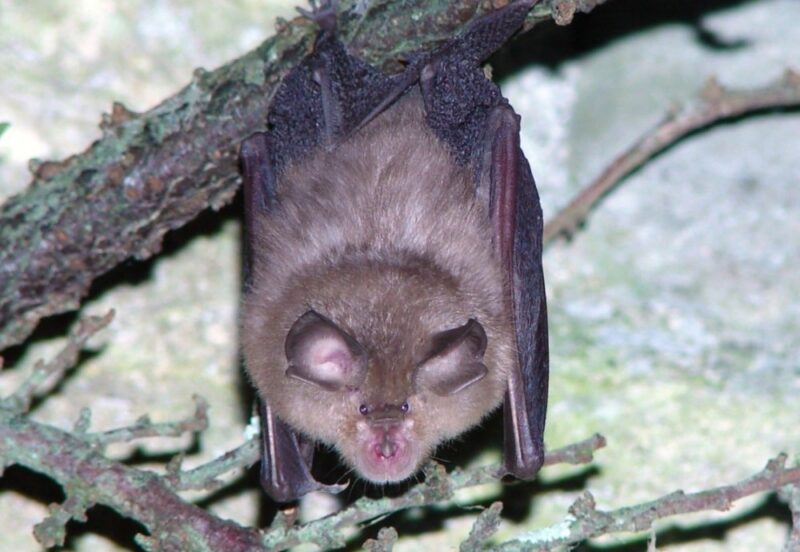Lesser horseshoe bat

Status
Native and rare
Population
50,400
Scientific name
Rhinolophus hipposideros
Lesser horseshoe bats are one of the smallest British mammal species, weighing about a third as much as a greater horseshoe bat and about the size of a plum with their wings folded. They have grey-brown fur and, like the greater horseshoe bat, have a noseleaf, which they use in echolocation. Their wingspan is half that of that of a greater horseshoe. They hang freely by their feet and will twist their bodies round to look about them before flying off. Lesser horseshoe bats hunt close to the ground, rarely more than five metres high and often snatch their prey off stones and branches. They sometimes take larger prey to a perch to consume it.
Wingspan: 19 – 25cm
Weight: 4 – 9.5g
Lifespan: Up to 21 years
Reproduction
Mating occurs from September to November and females form maternity colonies in late spring. Usually a single pup is born in June or July and is weaned by six weeks.
Diet
Midges, small moths, caddis flies, lacewings, beetles, small wasps and spiders.
Winter roosts
Caves, tunnels, cellars and mines.
Summer roosts
Mostly roof spaces of large rural houses or stable blocks where they form tightly huddled groups to keep warm, particularly during bad weather.
Habitat
Lesser horseshoe bats feed mainly along woodland edges, pastures and wetlands.
Predators
Domestic cats and sparrowhawks.
Threats
Starvation; and insecticides.
Ultrasound
They echolocate at a constant frequency of 110kHz, sounding similar to greater horseshoe bats on a bat detector.
Status and conservation
GB Red List: Least Concern (LC).
Population size and distribution
UK population 50,400 (equally divided between England and Wales); Ireland, 12,000. The population has increased since 1999. Their distribution is restricted to Wales, western England and western Ireland.
Did you know?
Unlike other bat species, horseshoe bats are able to wiggle their ears, and those of lesser horseshoe bats are particularly mobile, helping them to locate the precise position of prey.
